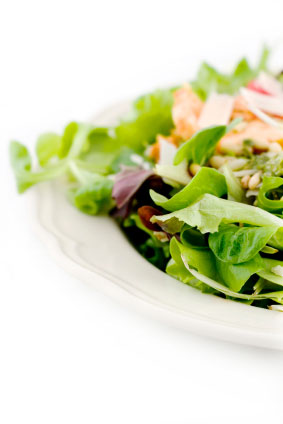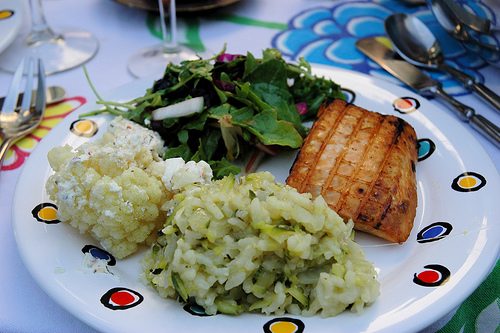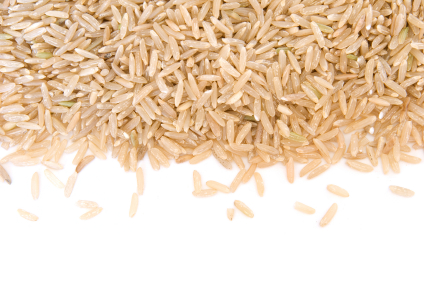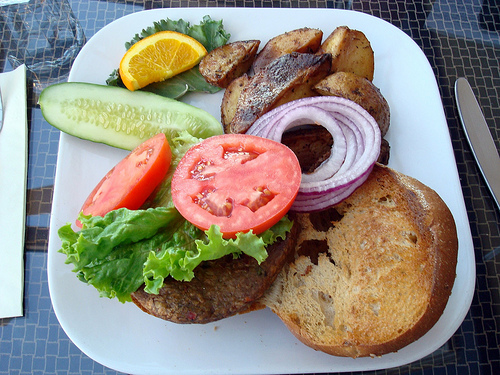 Like perennial weeds, I can’t help noticing that omnivores always seem to raise the same handful of poorly reasoned arguments against vegan and vegetarian diets. But each of the tried-and-true arguments against plant-based eating is so easily debunked, it’s just no fun! The first anti-veg weed we need to pull — because it’s the near-universal first remark when anyone hears ‘vegetarian’ or ‘vegan’ — is the myth that humans need meat for protein.
Like perennial weeds, I can’t help noticing that omnivores always seem to raise the same handful of poorly reasoned arguments against vegan and vegetarian diets. But each of the tried-and-true arguments against plant-based eating is so easily debunked, it’s just no fun! The first anti-veg weed we need to pull — because it’s the near-universal first remark when anyone hears ‘vegetarian’ or ‘vegan’ — is the myth that humans need meat for protein.
Protein 101
Most people voicing this argument have no idea how much protein human beings actually need, so let’s start there.
The RDA for protein is small: 0.8 grams per kilogram (0.36 grams per pound) of body weight, per day. This translates to about 10% of your daily caloric intake. For most adults aged 19 to 70, protein consumption should fall between 46 to 56 grams per day. Nutritional needs change during pregnancy, athletic training, or while recovering from serious injury; but these guidelines represent typical protein requirements for most adults.
Since plant proteins are metabolized differently than animal proteins, some nutritionists recommend 0. 9 grams per kilogram (0.45 grams per pound) of body weight for vegans. Even that higher figure would only bump protein recommendations into the range of 54 to 68 grams per day, for 120 to 150 pound vegans.
Compare these recommendations to the 101-115 grams of protein consumed each day by the average American omnivore.
The following table shows how insanely easy it is to meet protein needs with vegan foods:
| FOOD | AMOUNT | PROTEIN (gm) | PROTEIN(gm/100 cal) |
| Tempeh | 1 cup | 41 | 9.3 |
| Seitan | 3 ounces | 31 | 22.1 |
| Soybeans, cooked | 1 cup | 29 | 9.6 |
| Lentils, cooked | 1 cup | 18 | 7.8 |
| Black beans, cooked | 1 cup | 15 | 6.7 |
| Kidney beans, cooked | 1 cup | 13 | 6.4 |
| Veggie burger | 1 patty | 13 | 13.0 |
| Chickpeas, cooked | 1 cup | 12 | 4.2 |
| Veggie baked beans | 1 cup | 12 | 5.0 |
| Pinto beans, cooked | 1 cup | 12 | 5.7 |
| Black-eyed peas, cooked | 1 cup | 11 | 6.2 |
| Tofu, firm | 4 ounces | 11 | 11.7 |
| Lima beans, cooked | 1 cup | 10 | 5.7 |
| Quinoa, cooked | 1 cup | 9 | 3.5 |
| Tofu, regular | 4 ounces | 9 | 10.6 |
| Bagel | 1 med. (3 oz) |
9 | 3.9 |
| Peas, cooked | 1 cup | 9 | 6.4 |
| Textured Vegetable Protein (TVP), cooked | 1/2 cup | 8 | 8.4 |
| Peanut butter | 2 Tbsp | 8 | 4.3 |
| Veggie dog | 1 link | 8 | 13.3 |
| Spaghetti, cooked | 1 cup | 8 | 3.7 |
| Almonds | 1/4 cup | 8 | 3.7 |
| Soy milk, commercial, plain | 1 cup | 7 | 7.0 |
| Soy yogurt, plain | 6 ounces | 6 | 4.0 |
| Bulgur, cooked | 1 cup | 6 | 3.7 |
| Sunflower seeds | 1/4 cup | 6 | 3.3 |
| Whole wheat bread | 2 slices | 5 | 3.9 |
| Cashews | 1/4 cup | 5 | 2.7 |
| Almond butter | 2 Tbsp | 5 | 2.4 |
| Brown rice, cooked | 1 cup | 5 | 2.1 |
| Spinach, cooked | 1 cup | 5 | 13.0 |
| Broccoli, cooked | 1 cup | 4 | 6.8 |
| Potato | 1 med. (6 oz) |
4 | 2.7 |
| Sources: USDA Nutrient Database for Standard Reference, Release 18, 2005 and manufacturers’ information. | |||
No Problem!
So basically if you’re eating enough calories to meet your body’s metabolic needs, you could eat only potatoes and still get enough protein! You’d have many other nutritional deficiencies, and that diet is definitely not recommended(!) — but you’d get enough protein. For vegans or vegetarians that eat a wide variety of plant-based foods, and eat enough calories for their bodies’ needs, protein is a nutritional non-issue.
However, those who follow a standard American (or other high-animal-protein) diet can easily get TOO MUCH protein, leading to common health problems like diabetes and cancer. Getting more than 30% of your calories from protein can lead to kidney damage, as well.
So, why all the confusion? Why does every single SAD eater who glances at my dinner plate think I’m bound to keel over from protein deficiency at any moment?
Got Food?
Here’s the thing: meat is a good source of protein IF YOU’RE STARVING. If food is scarce and you’re not getting enough calories to meet your body’s metabolic needs, protein-dense meat provides good caloric ‘bang for your buck’ towards postponing the point where your body has to start metabolizing its own muscle tissue.
Throughout human history, yes: often animal protein was crucial to survival of the tribe, because food was scarce. Even today hunger is a critical problem in some parts of the world, where animal protein could be valuable in averting imminent death due to malnutrition.
Now, then — honesty moment — does that scenario have anything AT ALL to do with your current actual nutritional needs?! Reflect on this question as you head for the buffet table, order that pizza, or pull up to the drive-thru window.
In other words, if you’re reading this in a developed Western nation: probably not! All our top killer diseases are caused by an EXCESS of food, specifically excessive consumption of animal fats, animal proteins, and simple sugars. Diabetes, coronary artery disease, cancer, Alzheimer’s disease: all are linked to over-consumption of an animal-based diet.
So No, Actually: We Don’t
Assuming non-starvation conditions, vegans get enough protein without even trying; it’s so easy we don’t even really have to think about it at all, except for the purpose of having this very conversation.
The more common problem in American kitchens is too MUCH protein, potentially leading to significant health problems for those who eat mostly animal-based foods.
So. Next argument, please: this one’s a Nope.
Image credit: Creative Commons photo by potential past.
Editorial note: article modified once after original publication, for typographical error correction and improved clarity.








“This translates to about 1 calorie in 100 from protein, or about 10-12% of daily caloric intake.”
That’s not true for a few reasons.
(1) The RDA actually translates into about 5-11% of daily calorie needs for most people, not 10-12%.
(2) 1 calorie from 100 is 1%, not 10-12%.
(3) The figures in the part of the sentence should match the second if they remain, but the first part of the sentence is unnecessary in the first place. What works better is simply either:
“This translates to about 5-11 calories out of 100 from protein.”
-or-
“This translates to about 5-11% of daily caloric intake.”
The gist is that <11% dietary input = meeting RDA… so core point remains unchanged. Thanks for your input though, it's always appreciated.
What you wrote in the article is simply wrong. “1 calorie out of 100” is obviously 1%; that’s elementary percentages. But there is no human protein need that’s as low as 1%. You also said that 1 out of 100 is 10-12%, which is also not right. And that 10-12% range that you gave for the RDA is wrong too; the real RDA range is around 5-11%.
In your reply you said that your point was “<11% = meeting RDA", but (1) that's not what you said in the article, and (2) that's wrong anyway, because <11% does not include 11%.
If all this isn't clear or you don't believe me then I suggest you consult somebody else whose expertise you trust. Every writer has an obligation to not misinform his/her readers.
Okey dokey, I believe you. Take some deep breaths, I’m not interested in stepping out into the virtual parking lot to slug it out… I have no illusions about my own infallibility, and I accept your constructive criticism with humility. Thanks for reading critically; that’s a good thing to do, and I support it.
Regarding RDA recommendations, my references were Food and Nutrition Board (FNB) Dietary Reference Intakes for Energy, Carbohydrate, Fiber, Fat, Fatty Acids, Cholesterol, Protein, and Amino Acids (Macronutrients) (2005) and Messina V, Mangels R, Messina M. The Dietitian’s Guide to Vegetarian Diets, 2nd ed. Sudbury, MA: Jones and Bartlett Publishers, 2004. My computer lacks a key for ‘less than or equal to,’ for ‘11%’,and I was writing in haste; I apologize for any inconvenience thereby caused to your sensibilities.
I purposefully approximated, as indicated by words like ‘about,’ to avoid overly pedantic obsession with details; and I purposefully stayed towards the top of the range, following err-on-the-side of safety conventions common to nutrition research and writing. Ergo, 5-11% and ‘about 10-12%’ are not in conflict.
The sentence that enrages you about ‘1 calorie in 100’contains a typo, and I will own that mistake. My bad. However, I will not edit a previously published work based on a typo that has already been corrrected (ad nauseum) in the comments.
I work to write accurately, and respect clarity, and thank you for your feedback. But again, the core point remains: protein needs are easy to meet with a vegan diet. That’s the bottom line; none of your suggested edits alter the result of that fundamental equation. If you feel that I could have presented that point better, well, hey: duly noted.
As always, thanks for reading.
It’s so simple to correct the glaring error (“1 in 100”) that I don’t know why you wouldn’t. Leaving it in also gives the impression that you don’t understand percentages, which I’m sure is not what you hope to convey.
While the 10-12% range you quoted is not accurate, it’s not grossly wrong like the “1 in 100” part. Still, if you wanted to be accurate (and I don’t know why you wouldn’t), you would say 5-11% instead of 10-12%.
By the way, all computers can do the ≤ sign, but if you don’t know how to type it, and you want to refer to numbers 11 and lower, you could simply say “less than 12” (rather than “less than 11”).
By the way, I won’t be offended if you choose to delete all these comments. It was just a way to bring this issue to your attention, but it’s not important for me for the world to see them.
I will take your remarks re typo correction under advisement; 10-12 percent is correct, for range of recommended protein RDA using an often-used but unsung skill known as rounding; and I don’t delete comments unless they’re selling something, or else overtly offensive. Disagreeing with me is not overtly offensive; so, carry on.
:-)
If you’re suggesting that 5-11% rounds to 10-12%, then I think every scientist and math teacher would disagree about how rounding actually works.
If you’re saying that 10-12% is the correct figure as per the RDA, then the RDA simply doesn’t say that.
For example, using the DRI reference you cited earlier, a 5’6″ 18-year-old male would need 49g of protein, using the formula of 0.85kg of protein per kg of ideal body weight on p. 633. (Using a BMI of 20.5, for ideal weight of 57.6kg.)
Using the formula for energy needs on p. 182 (88.5 – (61.9 × age [y]) + PA × (26.7 × weight [kg] + 903 × height [m]) + 25 kcal), with an actual weight of 67.6kg an a physical activity coefficient of 1.26 (“active”), the daily energy need is 3181 calories.
49g of protein is 196 calories, and divided by 3181, that’s 6.2% protein as a percentage of calories. 6.2% doesn’t “round” to 10-12%. It’s not even close.
Yes; being greater than 5, in common rounding practice ‘between 6 and 7’ does in fact round to 10. En route to my master of science degree, I encountered many science teachers who enthusiastically utilized rounding in this exact manner.
I am assuming at this point that you have no opportunities to argue in real life; therefore I am glad to help you meet that need, within this setting.
I look forward to your article about meeting protein needs within a vegan diet. I will be happy to link to it; just pass along the info, once it’s completed!
I simply don’t believe that any science teacher would ever endorse rounding in the bizarre and reckless manner that you suggest, much less that they would commonly do so.
My own article about meeting protein needs in a vegan diet has been linked from each and every one of my comments.
Super! The admin page wasn’t showing the links in your comments.
I definitely encourage folks to read different sources.
I’m glad we’re in agreement that protein isn’t a big deal in a vegan diet. I guess I’m even glad you like your writing better than mine, as I’m sure it gives you great satisfaction and joy.
I’m amused that my approximation of 5-11% as ‘about 10%’ so deeply offends you… shall we duel?! :-)
This post isn’t a scientific paper in a peer reviewed journal. You seem to want a textbook approach; that was never my intent. The point is that even at the upper limit of RDA for protein, it’s totally easy-breezy to get without meat. Ta-da! The end. No textbook equations are necessary, or even beneficial for purposes of clarity.
There’s a place for that; it’s nutrition class. I’m sure your article goes into much more precise calculations, which is fine if that’s how you want to treat the subject matter. But to maintain that every other way of describing the data (including appproximations stated as approximations) is ‘simply wrong’ is pretty juvenile, in my opinion.
But I’m happy to keep talking about it as long as you like. Whatever makes a reader happy! :-)
5-11% is arguably “about 10%”, but you didn’t give a single number, you gave a range. Forgive the reader for expecting a stated range to be in the ballpark rather than having the lower number be off by close to 100%. There is certainly no harm in providing figures that are way more accurate than the ones you did, though for some reason you’re fighting against that idea rather forcefully. Had you given a single number rather than a range I wouldn’t have commented on that particular issue. I still would have pointed out that “1 in 100” is nowhere close to 10-12%, but you’ve already made it clear that you’re not concerned about whether your numbers are accurate or not (to the point that you label those who point that out as “juvenile”).
Neither your page nor mine is a peer-reviewed journal, but even writing for the general public, as journalists I think we both have an obligation to present information honestly and accurately. Personally, I take that responsibility seriously, but you all but brag about leaving known-bad figures in your article. I don’t know why anyone would be so averse to presenting information accurately.
Friend Michael, once again I offer thanks for your voluminous input. I stand by the accuracy of my numbers, in the context in which they were presented, except for the typo which I thank you for bringing to my attention. I respect your right to disagree with my representation of the data as a high-range rounded figure, for convenience and clarity towards the actual point of the article, which is not dependent on microgram calculations; and I’m glad to have so many voices speaking to the ease with which protein needs are met within a vegan diet. I am not fighting forcefully against, well, anything except the idea that protein needs are difficult to meet with plant-based foods. I do think it’s juvenile to spend this much time and energy on what amounts to saying ‘well I’m righter than you, so nyah!’… surely there are better things for both of us to do.
I hear your objections; thank you; with the exception of the typo which has now been identified clearly for future readers, I simply disagree with you. My purpose was to paint the picture in broad strokes, for a general audience, and I’m satisfied with the result. In that context, rounding and approximations are appropriate; your outrage is misplaced.
You can trivialize my comments all you want (I heard you the first time you called me juvenile), but the bottom line is that you used bad numbers in your article and have shown no interest in fixing them.
I’m not sure what you mean about the typo being “identified”, but if you mean that you think it’s sufficient to expect readers to dig through the comments rather than your simply fixing the acknowledged typo in the article itself, then that’s disappointing, though at this point I can’t say I’m surprised.
And for the record, I don’t think trying to get information to be accurate (especially when that information concerns people’s health) is “juvenile”.
I have thanked you for your comments. I didn’t use ‘bad numbers,’ I presented the same data you’re using but utilized upper-range approximations for ease of discussion, and clarity for a non-specialized audience. ‘1 in 100’ contains an error, and could be left out of the sentence in which it occurs, we’re in agreement there; and I may remove it. But then these reams of comments will make no sense, and your tirades about that error will be less fun for readers.
You keep bringing it up, so let me once more attempt to clarify: I’m not calling you juvenile; I’ve never met you, and don’t know you well enough to try to sum up your character in one word. I’m refering only to your remarks and overall tone in this particular comment thread. To spend this kind of energy on insisting your way is the one true only right way, and everyone else is wrong unless they agree with you, and present information exactly as you would: yes, I think that’s an immature approach to any issue worthy of debate.
You seem determined to frantically shovel dirt onto a molehill, so that you can call it a mountain. Follow your bliss, I suppose! As long as it doesn’t harm others, I think people should do what makes them happy…
I wish you peace and joy, in all your endeavors. As always, thanks for reading.
“I didn’t use ‘bad numbers,'”
The numbers are undeniably bad. Your lower range is off by a factor close to 100%. Your “1 in 100” wording is off by an entire order of magnitude. If those numbers aren’t bad, then France is not a country.
“To spend this kind of energy on insisting your way is the one true only right way, and everyone else is wrong unless they agree with you, and present information exactly as you would: yes, I think that’s an immature approach to any issue worthy of debate.”
You continue trivialize printing bad numbers by suggesting that someone who points out the right numbers is necessarily immature. If I take the position that earth revolves around the sun rather than the opposite, then yes, I would “believe that everyone else is wrong unless they agree with me”, but that would simply mean that I happen to be right. I don’t think there’s anything immature about pointing out when numbers are far, far off the mark. I’m perplexed that you defend keeping bad figures in the article so strongly, but to each her own.
Dude: again, I was using ballpark figures for ease of discussion. Things are going to be ok! Take deep breaths!
The point, again, is that even at the upper ranges of protein RDA, it’s incredibly easy to get all the protein you might ever need from vegan sources. We can chat all year, if you like; but that’s the gist, unchanged despite your vociferous objections to my use of rounded data. There’s an error (‘1 in 100’) that I have thanked you for bringing to my attention, and may remove once the ranting ends — otherwise these comments would be disconnected from the text you’re commenting upon. If you don’t like the way I presented the material in this post, I’m pretty much ok with it. Luckily you’ve written your own article, thoughtfully linked, and anyone who wishes to do so can prefer your more detailed presentation over mine: the point remains unchanged, that vegan protein is a dietary nonissue in terms of meeting RDA.
Have a great day! And as always, thanks for your comments.
You continue to trivialize and mischaracterize what I’m saying. You keep admonishing me to “Take deep breaths,” as though I’ve ever been emotional about this. It’s also not fair for you to say “despite your vociferous objections to my use of rounded data,” because I *didn’t* object to your use of rounded data, because you *didn’t* use rounded data. Your lower range figure is off by a good 100%. That’s not rounding, by any stretch. You were likewise unfair when you accused me of trying to measure figures down to the microgram, which is nowhere near true. The reason I wrote is that one of your figures is off by 100% and another is off by an entire order of magnitude. Those are large errors, not small ones. You’ve made it clear that you don’t care about that, and have chosen to insult and trivialize me for bringing it up. If you choose to keep bad data in your article that’s your decision, but insulting someone who took the time to bring the error to your attention is even more disappointing.
Mmmmkay. Again, the point is that even the highest RDA for protein = easy to meet with vegan diet. Glad we’re in agreement about that. You don’t like my presentation of the data, though you don’t disagree with my conclusion; duly noted. As always, thanks for reading, and for sharing your opinions. Cheers!